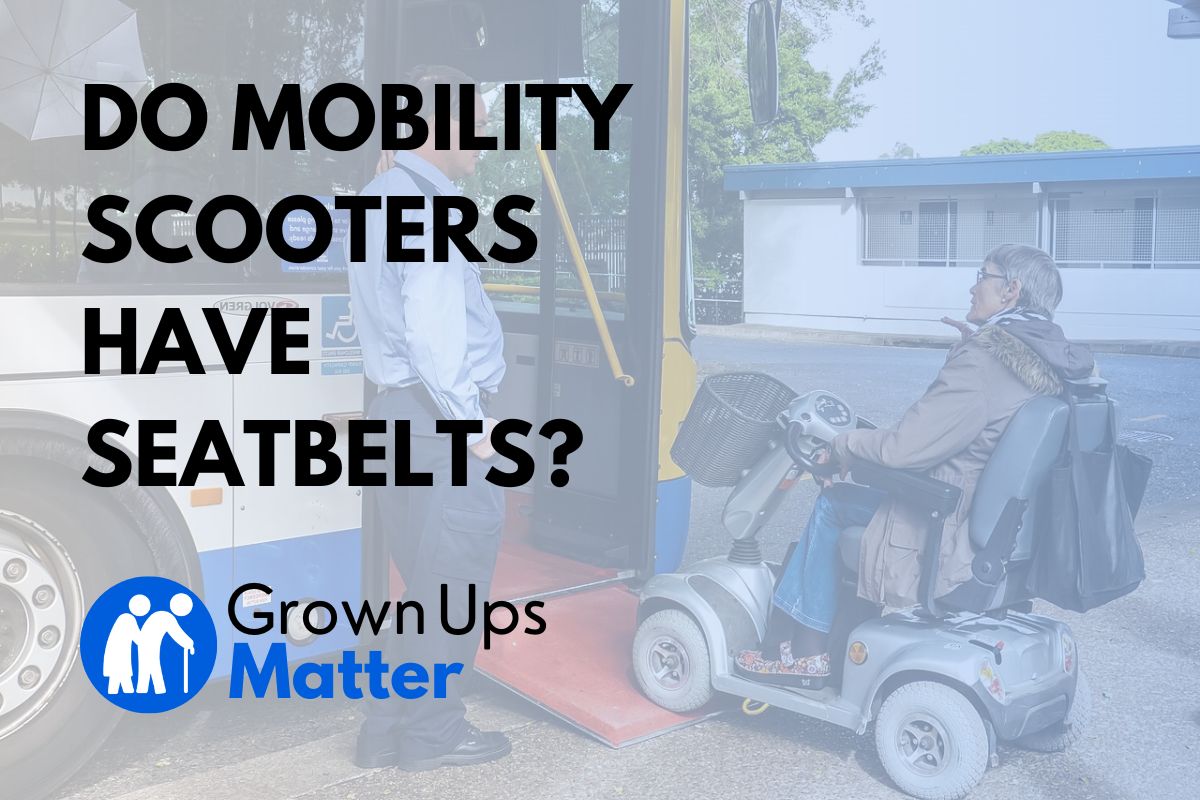Many people, understandably concerned for their well-being ask this question and perhaps many of us take it for granted.
But with the speeds, mobility scooters can achieve, and the current less-than-optimal state of sidewalks in many places, avoiding accidents should be a top priority.
The quick answer is:
Yes, some mobility scooters do have seatbelts as a default feature, and in most others, it’s an affordable add-on you can get to improve your riding comfort and safety.
Falling from your mobility aid can be very dangerous, especially for senior users.
The seatbelt helps to keep the rider securely seated in the scooter and can help to prevent them from being thrown off the scooter in the event of a collision or sudden stop.
In this article, I will tell you all you need to know about seatbelts on mobility scooters, how much they cost, their intended usage, and the drawbacks they may come with.
Key Takeaways:
- Seat belts are an option on most mobility scooters, but not a standard feature
- A seat belt can improve riding comfort and safety by keeping the rider securely seated and preventing them from being thrown off in the event of a collision or sudden stop
- The cost of a seat belt kit for a mobility scooter is around $50 on average.
- Seat belts are not necessary on mobility scooters, as they are not typically driven on roads and the risk of crashing is lower than in a car.
- There is no requirement for drivers to use a seatbelt on mobility scooters, but it is a good habit to always strap in when using the scooter.
- Disadvantages of seatbelts on mobility scooters include movement restrictions, discomfort, potential damage from restraint during an impact, back pains, and difficulty releasing oneself in case of an accident.
Are Seatbelts Standard on Mobility Scooters?
Sadly, seatbelts are not a standard feature on most mobility scooters.
Usually, however, most units come prepared for the upgrade, and their installation is rather easy.
Is a Seatbelt Necessary on a Mobility Scooter?
Seatbelts in scooters are not as necessary as in cars.
The reasoning behind this is that you won’t be going as fast, and the risk of crashing is way lower than while driving.
However, they can be a great addition in terms of safety and ride comfort.
A seatbelt can help you stay in place while driving on rougher terrains, and assist you with maintaining a proper upright driving position.
How Much Does a Mobility Scooter Seatbelt Cost?
On average, seatbelt kits for mobility scooters will cost you around $50.
It will depend on the model, and availability, with most prices ranging from $25 to $75.
Do ask the manufacturer of your scooter or a specialized retailer if the seatbelt you are planning on buying is compatible with your particular unit.
Attachment methods might vary between scooters, especially from brand to brand.
Should You Wear Your Scooter’s Seatbelt at All Times?
You are not required to wear your scooter’s seatbelt whenever you are on it.
This is why many units don’t have seatbelts at all.
Although the benefit of having a seatbelt is discernable, it’s not as big as what happens in a car.
It’s, however, a good habit to always strap on whenever you hop into your unit.
Seatbelts are particularly useful and can do a lot for your driving experience when going off-road or on bumpy roads since they will keep you from moving around in your seat.
Are Seatbelts Required for Taking Your Scooter to the Road?
Since mobility scooters are not commonly allowed on roads or vehicle traffic lanes and are intended to be used on sidewalks and pedestrian trails, there is no particular requirement for drivers to use a seatbelt.
This said, road rules vary on a municipality basis, and I encourage you to check what are the specific limitations where you live.
Some gated communities do allow scooters on their internal streets, as well as some counties do on side roads.
Disadvantages of Wearing a Seatbelt on Your Scooter
As with anything, seatbelts on scooters come with certain disadvantages.
Some of these might include:
- Certain movement restrictions, particularly for steering if your tiller is not set up properly for your driving posture.
- Discomfort from adopting an unnatural posture or the pressure it exerts on your waist
- Potential damage from restraint during an impact or collision. A trade-off against the injury potential of the collision without a seatbelt
- Back pains
- Difficulty releasing yourself in case of an accident or tipping over
All the claims made in this article are only for informational purposes, based on the writer’s experience and not clinical advice. You should always consult your physician or physical therapist if you have any doubts about how this applies to your specific case.

Mallory is an occupational therapist with a passion for helping the elderly maintain their independence and mobility. After working in the field for several years, she decided to start sharing her knowledge and experience with a wider audience. Through this site, Mallory offers practical tips and exercises to help seniors improve their mobility and manage any limitations they may have. She is dedicated to providing accessible and effective resources to help her readers lead happy and healthy lives.

